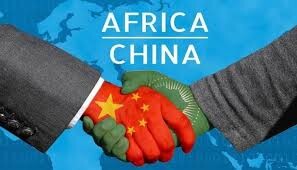China has formally lifted import tariffs on a sweeping array of goods from 53 African countries, extending the benefit to middle-income nations such as Egypt, Kenya, and Nigeria. The policy announced during a high-level forum in Changsha could reset the rules of trade for the continent. But can African industries rise to the challenge and meet China’s demand?
For Egypt and its African peers, the opportunity is historic. The world’s second-largest economy is effectively opening its $17 trillion market to African-made products without the traditional price barriers. To capitalize, however, African economies must not only expand exports but reimagine them.
What Egypt Can Export—and Scale
1. Processed Foods & Agribusiness
Egypt already exports citrus fruits and frozen vegetables to China. With tariffs removed, Egypt can diversify into olive oil, dates, pomegranate-based products, honey, and packaged juices, all of which have competitive cost advantages and growing appeal in Chinese urban centers. Action Step: Streamline sanitary and phytosanitary standards to Chinese requirements; launch marketing campaigns in China’s tier-2 cities.
2. Textiles & Ready-Made Garments
Egypt’s textile exports to Europe and the U.S. are strong. With quality and cost competitiveness, cotton-based apparel, uniforms, and blended synthetic garments could find a new consumer base in China. Action Step: Establish a textile export hub linked with Chinese e-commerce platforms like JD.com and Taobao.
3. Electronics & Components
Through “Egypt Makes Electronics,” Egypt produces locally assembled devices, including smartphones and home appliances. These low-cost alternatives to major brands can appeal to China’s rural and suburban buyers. Action Step: Engage Chinese distribution partners and meet mandatory product certification thresholds.
Other African Nations
Kenya already dominates cut flower exports and is a global player in black tea. Both are in demand in China’s growing premium lifestyle and wellness markets. Next Steps: Invest in cold-chain infrastructure and digital traceability to meet Chinese consumer expectations.
Nigeria’s potential lies in cocoa butter, sesame seeds, leather, and cultural crafts. With rich natural resources, it can expand into value-added chocolate products, shea-based cosmetics, and even Nollywood digital content for China’s growing streaming platforms. Next Steps: Improve quality compliance mechanisms and build digital export channels.
South Africa’s wine is increasingly appreciated in East Asia, and its platinum group metals, citrus, and beef already enter Chinese ports. With tariffs off, the wine industry especially stands to grow. Next Steps: Establish regional wine tastings and events across China; increase Chinese-language branding and labeling.
Ethiopia’s world-famous Arabica beans already reach Shanghai cafes. Now, with tariffs gone, roasted and packaged variants can scale, while Tanzania’s growing cotton and textile sectors can appeal to bulk Chinese buyers. Next Steps: Develop branding and storytelling around “origin coffee” and “sustainable cotton” for ethical Chinese consumers.
The Road Ahead: What Governments Must Do
- Strengthen Export Infrastructure: Expand ports, rail logistics, and digital customs platforms to ensure timely delivery to Chinese cities.
- Launch Export Acceleration Programs: Create national “China Export Desks” offering regulatory assistance, market access advice, and e-commerce training.
- Leverage the African Continental Free Trade Area (AfCFTA): Use intra-African sourcing to create finished goods from pan-African raw materials, building complex value chains.
- Negotiate Sector-Specific Agreements: Each African country should negotiate MOUs with China’s state buyers or importers in promising sectors like agri-tech, fashion, or mobile devices.
Economists at the African Export-Import Bank forecast a 30–40% increase in African exports to China by 2026 if current policies are backed with implementation. For Egypt alone, this could mean tripling its exports to China—reducing a trade deficit that stood at over USD 12 billion in 2023.
“This is not just an opportunity—it’s a test of Africa’s manufacturing potential,” said Dr. Ahmed El-Haddad, chief economist at the Egyptian Center for Economic Studies. “China has opened the door. Now Africa must walk through it with precision, policy, and product.”
As China signals a pivot from being merely Africa’s importer to becoming its partner in prosperity, the real question isn’t about tariffs. It’s about readiness. If African countries mobilize fast, this could mark the dawn of a new economic era—where Made in Africa becomes not just a label, but a global standard.


